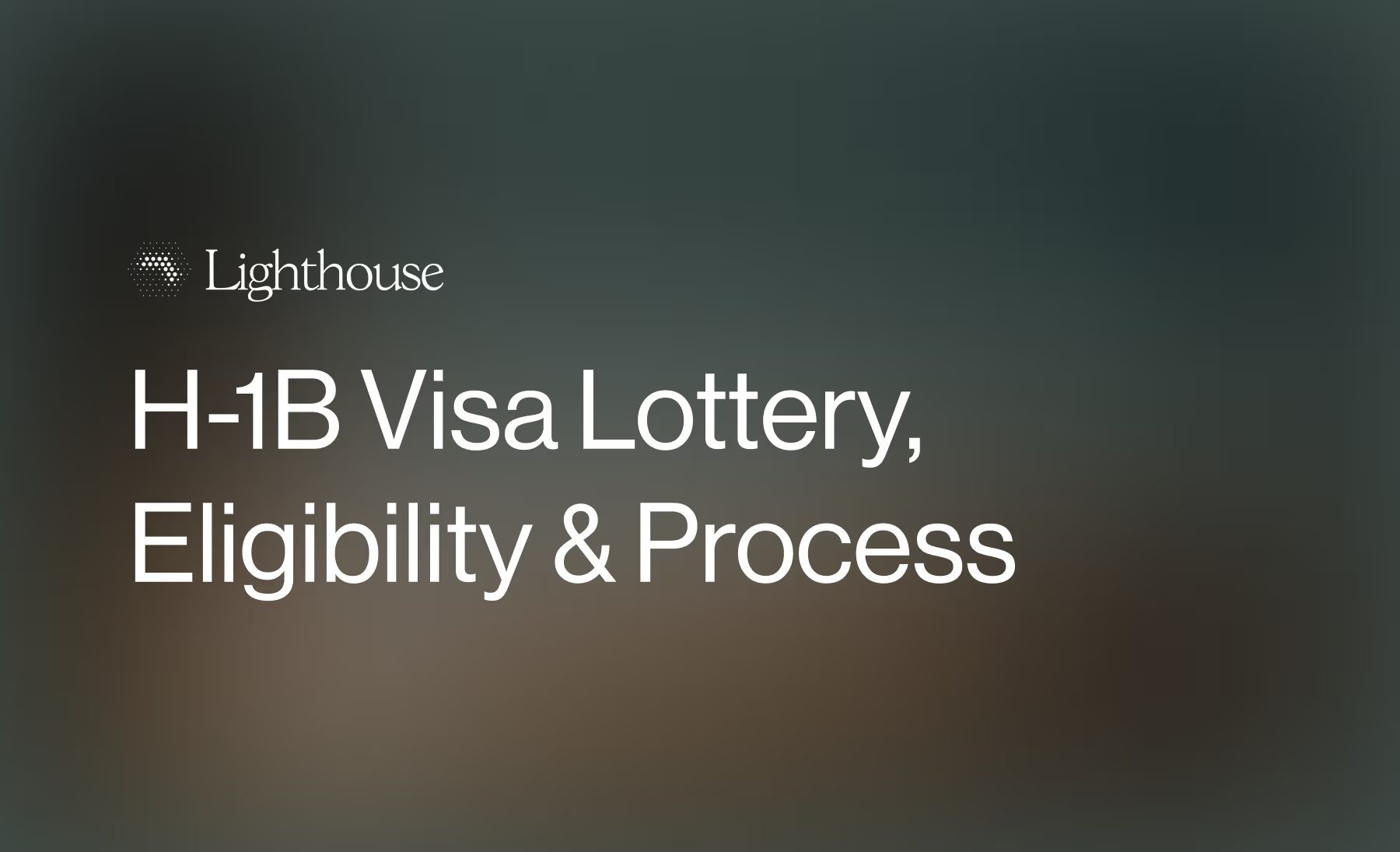Labor Certification (PERM) for EB‑2 and EB‑3 Green Cards
Everything you need to know about labor certification (PERM) for employment-based green cards.


Labor certification, also known as PERM, is the first and most critical stage in many employment-based green card applications. It is a process managed by the U.S. Department of Labor (DOL) under the Code of Federal Regulations (CFR) that ensures hiring a foreign worker will not adversely impact the wages or working conditions of U.S. workers. Employers must follow detailed rules laid out in federal regulations and official DOL guidance available through dol.gov.
This guide explains how labor certification works, the steps required for compliance, and how it connects to the broader employment-based immigration process. It covers everything employers and workers need to know, so you can navigate the system confidently and remain compliant with DOL and U.S. Citizenship and Immigration Services (USCIS) standards.
What is labor certification (PERM)?
Labor certification is the first step in most employment-based immigration cases for permanent residence under the EB‑2 and EB‑3 categories. The Department of Labor (DOL) uses the Program Electronic Review Management system, known as PERM, to evaluate whether hiring a foreign worker will negatively affect the job opportunities, wages, or working conditions of U.S. workers.
Under the Immigration and Nationality Act (INA), a U.S. employer must prove that:
- The job opportunity is permanent and full-time.
- There are no qualified, willing, and available U.S. workers for the position.
- The offered wage meets or exceeds the prevailing wage for that occupation and location.
The DOL’s Employment and Training Administration (ETA) oversees the foreign labor certification program. Once approved, the labor certification becomes the foundation for the immigrant petition (Form I‑140) filed with U.S. Citizenship and Immigration Services (USCIS).
Who must file a labor certification
Only the U.S. employer files the labor certification application. The foreign worker cannot file it independently.
Labor certification is required for:
- EB‑2 (Advanced Degree or Exceptional Ability) categories that are employer-sponsored.
- EB‑3 (Skilled Worker, Professional, or Other Worker) categories.
It is not required for:
- EB‑1A (Extraordinary Ability)
- EB‑1C (Multinational Executive or Manager)
- EB‑2 National Interest Waiver (NIW)
To qualify, the employer must show that the position is a bona fide full-time job offer and that the wage meets the prevailing wage determination issued by the DOL.
Labor certification requirements
Step 1: Prevailing wage determination
The process begins when the employer files Form ETA‑9141 through the DOL’s FLAG system. This form requests an official prevailing wage determination (PWD). The prevailing wage represents the average wage paid to similarly employed workers in the same occupation and geographic area.
The DOL assigns a wage level (I–IV) based on job duties, required education, and experience. The employer must offer at least this wage to the foreign worker.
Step 2: Recruitment process
After receiving the prevailing wage, the employer must conduct a good‑faith recruitment campaign to test the U.S. labor market. The goal is to determine whether qualified U.S. workers are available for the job opportunity.
Mandatory recruitment steps:
- Two Sunday newspaper advertisements in a major publication serving the area of intended employment.
- A 30‑day job order with the state workforce agency.
- A 10‑day internal posting at the worksite.
You must choose and complete at least three from the following options:
- Post the job on your company website
- Advertise on major job search sites such as LinkedIn or Indeed
- Participate in job fairs
- Engage in on‑campus recruiting
- Publish the listing through a trade or professional organization
- Use an employee referral program
- Advertise in a local or ethnic newspaper
These extra steps help confirm that the employer has made a genuine effort to recruit qualified U.S. workers before filing the labor certification.
Recruitment must run for at least 30 days but not more than 180 days before filing Form ETA‑9089.
The employer must document every applicant, interview outcome, and reason for rejection. All recruitment must be conducted in good faith and consistent with the job requirements listed in the application.
How to file labor certification: Form ETA‑9089
Once recruitment is complete, the employer files Form ETA‑9089 (Application for Permanent Employment Certification) electronically through the DOL’s FLAG portal.
Form sections include:
- Employer information: company name, address, Federal Employer Identification Number (FEIN), and contact details.
- Job details: title, duties, requirements, location, and offered wage.
- Recruitment summary: details of ads, posting dates, and applicant results.
- Foreign workers’ qualifications: education, experience, and licenses.
Both the employer and the foreign worker must review and sign the form to attest to its accuracy.
Supporting documents checklist
Employers must maintain a complete audit file for at least five years after filing. This file is not submitted with the application, but must be available if the DOL requests it.
Documents to retain:
- Prevailing wage determination (Form ETA‑9141)
- Copies of all advertisements and postings with publication dates
- Recruitment report summarizing applicant outcomes
- Business registration and FEIN verification
- Signed ETA‑9089 copy
- Evidence of job order and internal posting
- Correspondence with DOL or USCIS
Labor certification processing time and cost
The total labor certification processing time varies based on DOL workload and whether the case is audited.
Typical timeline:
- Prevailing wage determination: several months, depending on DOL volume
- Recruitment and job posting: one to two months
- DOL review of Form ETA‑9089: six to nine months
- With audit: add three to six months
Average total: eight to twelve months from start to approval.
Costs:
- No government filing fee for Form ETA‑9089
- Employer pays all recruitment and advertising expenses
- Optional attorney or service fees vary depending on complexity
Connection between labor certification, I‑140, and H‑1B
Once the DOL certifies the PERM application, the employer files Form I‑140 (Immigrant Petition for Alien Worker) with USCIS. This petition confirms the worker’s eligibility for permanent residence based on the approved labor certification.
The labor certification’s approval date becomes the priority date, which determines when the worker can apply for a green card under the Visa Bulletin.
For H‑1B visa holders, an approved or pending labor certification can support extensions beyond the standard six‑year limit if it has been pending for at least 365 days or if the I‑140 is approved but awaiting a visa number.
Common issues: audits, denials, and delays
The Department of Labor (DOL) may audit a labor certification case randomly or for specific reasons. Common audit triggers include job requirements that go beyond the normal occupational standard and recent layoffs in related roles. Missing or inconsistent recruitment documentation, or degree and experience requirements that appear overly restrictive, can also trigger audits.
When a case is audited, the employer must respond within 30 days and provide all requested documentation. Failure to do so results in denial.
If a case is denied, the employer has several options: they may refile the application after correcting identified issues, request reconsideration, or appeal to the Board of Alien Labor Certification Appeals (BALCA).
To avoid audits and delays, employers should use consistent job descriptions across all filings and correspondence, maintain clear wage and recruitment documentation, and keep detailed records of every step in the process. These practices help demonstrate compliance and reduce the likelihood of complications or requests for additional evidence.
Employer obligations and recordkeeping
Employers participating in the labor certification process must meet several ongoing compliance obligations. They are required to retain all recruitment records and audit files for at least five years after filing the application.
The job offer must remain open and available until certification is granted, and the employer must continue to honor the offered wage and working conditions throughout the process. Any material changes (such as updates to the job location, duties, or structure) must be reported to the Department of Labor (DOL) promptly.
Employers must also avoid any form of misrepresentation or retaliation, as these violations can lead to serious consequences, including debarment from the labor certification program.
Re‑filing, withdrawal, or amendment procedures
Employers may need to withdraw or amend a PERM application if:
- The job description or location changes before approval
- The prevailing wage determination expires
- The employer discovers an error after submission
Withdrawals are made through the FLAG system. A valid prevailing wage determination can often be reused for a new filing if still within its validity period.
Recent DOL and USCIS updates
The DOL periodically updates wage data and processing times. Recent adjustments include higher wage levels for certain occupations and system maintenance periods affecting submission timelines.
Check the PERM processing times dashboard for current averages and the USCIS processing times tool for I‑140 petitions.
Best practices to ensure compliance
To ensure compliance throughout the labor certification process, it’s best to begin early to avoid gaps or lapses in recruitment.
Use consistent job titles and duties across all filings to maintain accuracy and alignment with previous submissions.
Keep a digital audit file with clear chronological documentation, and review prior H‑1B or I‑140 filings to confirm consistency in job descriptions and offered terms.
Finally, conduct internal audits each year to proactively verify compliance and address any discrepancies before they become issues.
How Lighthouse helps
Lighthouse supports employers and foreign workers through every stage of the labor certification process. The platform combines automation with expert review to reduce risk and keep cases on schedule.
Lighthouse prepares audit‑ready documentation and coordinates each step, so employers can meet DOL requirements with confidence.
Start your labor certification case with Lighthouse.
Frequently asked questions
What is a labor certification?
It is an employer‑filed application to the Department of Labor proving that hiring a foreign worker will not negatively affect U.S. workers’ job opportunities or wages. It is the first step for most EB‑2 and EB‑3 green card cases under the PERM system.
How long does it take to get labor certification approved?
Without an audit, the average processing time is six to nine months. With an audit, it can extend to 12 months or longer. The DOL posts current averages on the PERM processing times page. Lighthouse monitors these updates to help employers plan filings accurately.
Are PERM and labor certification the same?
Yes. PERM stands for Program Electronic Review Management, the electronic system used by the DOL to process labor certification applications.
How long does it take to get an LCA certified?
The Labor Condition Application (LCA) applies to H‑1B visas, not permanent labor certification. LCAs are usually certified within seven business days through the FLAG system.
What happens after labor certification approval?
The employer files Form I‑140 with USCIS to classify the worker under EB‑2 or EB‑3. Once approved, the worker can apply for adjustment of status or consular processing when their priority date becomes current. Lighthouse coordinates these next steps to maintain continuity and compliance.
Can a labor certification be reused?
An approved labor certification is valid for 180 days and can be used only once for a specific worker and job offer. If it expires before the I‑140 is filed, the employer must refile. Lighthouse tracks these deadlines to prevent lapses.
What if the DOL audits my case?
You must respond within 30 days with all requested documentation. Lighthouse helps employers prepare audit‑ready files and manage responses to maintain compliance.
Lighthouse provides expert guidance and legal review to strengthen your case.
From document prep to USCIS submission, Lighthouse ensures your petition meets every requirement.

%201.svg)



